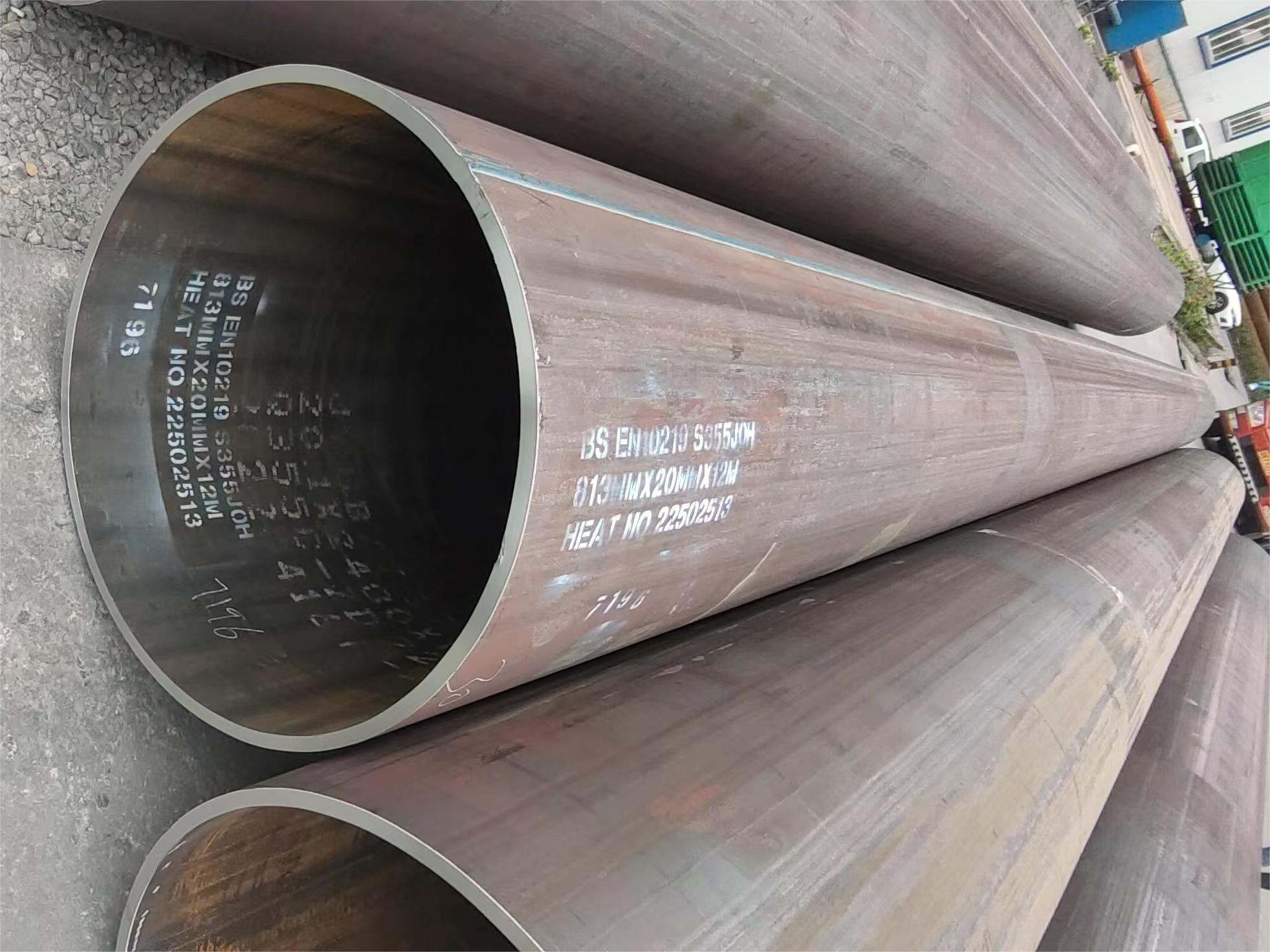SAWL steel pipe is a longitudinally welded steel pipe manufactured using the Submerged Arc Welding (SAW) process.
SAWL= LSAW
Two different designations for the same welding technique both refer to longitudinally submerged arc-welded steel pipes. This nomenclature is largely the result of language conventions and regional differences, but essentially, both describe the same manufacturing process.
SAWL Manufacturing Methods
Plate Selection and Preparation → Cutting and Edge Milling → Forming → Seaming and pre-welding → Internal and External Seam Welding → Welding Seam Inspection → Straightening, Cold Expansion and Cutting to Length → Heat Treatment → Surface Treatment and Protection → Final Inspection and Packaging
Plate Selection and Preparation
Selection of suitable steel plate material, usually high-strength carbon steel or alloy steel plate.
The steel plate needs to be surface-treated to remove rust, oil, and other impurities before manufacturing.
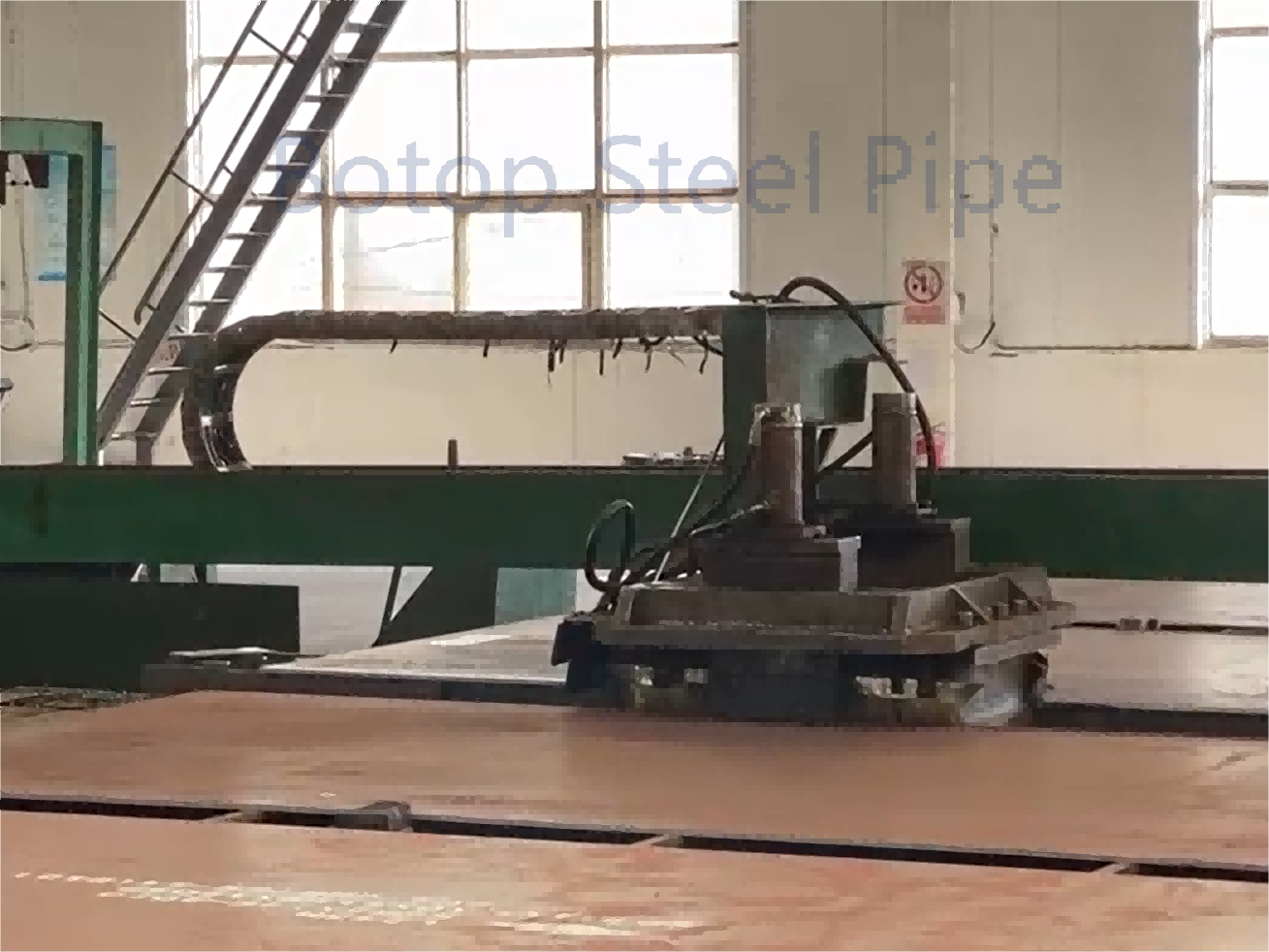
Cutting and Edge Milling
Cutting of steel plates: Cutting of steel plates to the right size according to the diameter of the steel pipe to be produced.
Edge milling: using an edge milling machine, removing burrs and proper edge shape.
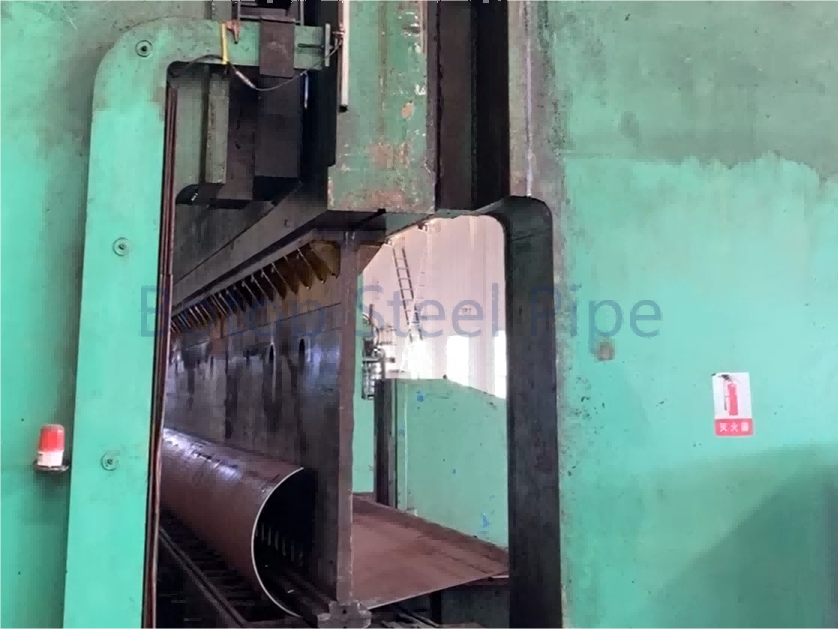
Forming
A flat steel plate is bent through a rolling mill so that it is gradually formed into an open cylindrical shape. The forming process is generally JCOE.
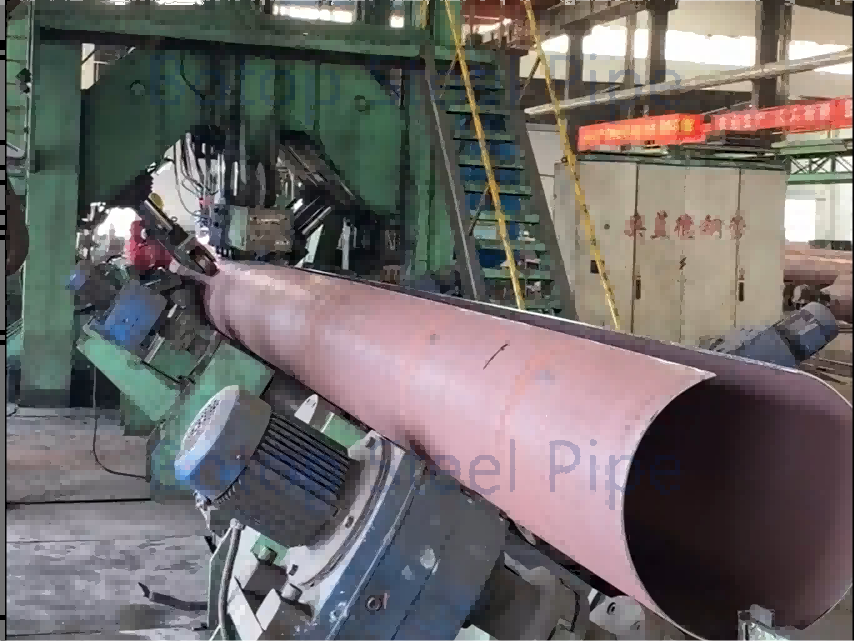
Seaming and pre-welding
Using a pre-welding seamer, seam, and pre-welding are performed.
Pre-welding at the ends of the plates to fix the shape and ensure accurate butt jointing of the tubes during the main welding process.
Internal and External Seam Welding
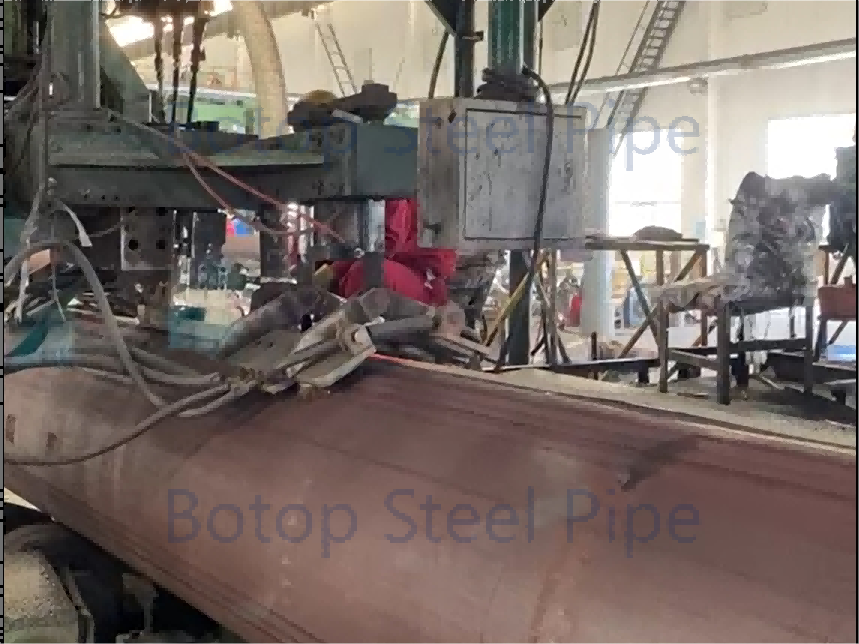
The long sides (longitudinal seams) of the pipe are welded using the submerged arc welding technique. This step is usually performed simultaneously inside and outside the pipe.
Submerged arc welding is carried out in an enclosed or semi-enclosed environment where the weld area is covered with a large amount of flux to prevent oxidation and keep the weld clean.
Welding Seam Inspection
After completing the weld, the weld is visually and non-destructively inspected (e.g. X-ray or ultrasonic testing) to ensure that the weld is free of defects and meets quality standards.
Straightening, Cold Expansion and Cutting to Length
Using a straightening machine, straighten the steel pipe. Ensure that the straightness of the steel pipe meets the standard requirements
Expand the steel pipe through the diameter expanding machine to achieve the exact diameter and eliminate stress concentration.
Cut the steel pipe into specified lengths according to customer requirements.
Heat Treatment
If required, the tubes are heat treated, such as normalized or annealed, to adjust the mechanical properties of the tubes and to enhance toughness and strength.
Surface Treatment and Protection
Coating treatments, such as anti-corrosion coatings, are applied to the surface of steel pipes to improve their corrosion resistance and service life.
Final Inspection and Packaging
Upon completion of all fabrication steps, final dimensional and quality inspections are performed to ensure that the product meets specifications. Proper packaging is performed in preparation for shipment.
SAWL Steel Pipe Main Production Equipment
Steel plate cutting machine, steel plate milling machine, steel plate pre-bending machine, steel pipe forming machine, steel pipe pre-welding seam machine, internal welding machine, external welding machine, steel pipe rounding machine, finishing straightening machine, flat head chamfering machine, expanding machine.
Main Materials of SAWL
Carbon Steel
The most common material for most standard applications. Carbon steel varies according to its carbon content and other alloying elements added to adjust its strength, toughness, and corrosion resistance.
Low-alloy steel
Small amounts of alloying elements (e.g., nickel, chromium, molybdenum) are added to improve specific properties, such as better low-temperature or wear resistance.
High Strength Low Alloy Steels (HSLA):
Specially designed low alloy compositions provide increased strength and toughness while maintaining good weldability and formability.
Stainless Steel
Used in extremely corrosive environments such as subsea or chemical handling facilities. Stainless steel tubing provides excellent corrosion and high-temperature resistance.
SAWL Common Specification Dimensions
Diameter
350 to 1500mm, sometimes even larger.
Wall thickness
8mm to 80mm, depending on the pressure rating of the pipe and the required mechanical strength.
Length
6 meters to 12 meters. Pipe lengths are usually customized according to customer needs and transportation constraints.
SAWL Steel Pipe Executive Standards and Grades
API 5L PSL1 & PSL2: GR.B, X42, X46, X52, X60, X65, X70
ASTM A252: GR.1, GR.2, GR.3
BS EN10210: S275JRH, S275J0H, S355J0H, S355J2H
BS EN10219: S275JRH, S275J0H, S355J0H, S355J2H
ISO 3183: L245, L290, L320, L360, L390, L415, L450, L485, L555
CSA Z245.1: 241, 290, 359, 386, 414, 448, 483
JIS G3456: STPT370, STPT410, STPT480
Performance Characteristics of SAWL Steel Pipe
High mechanical strength and toughness
able to withstand high pressure and harsh environments, suitable for applications requiring high strength.
Excellent dimensional accuracy
precise manufacturing process ensures uniformity in diameter and wall thickness, improving the overall reliability of the piping system.
Good welding quality
Submerged arc welding reduces oxidization under the effect of shielding gas and flux, enhancing the purity and strength of the weld.
High corrosion resistance
additional anti-corrosion treatment makes it suitable for a wide range of environments, including submarine or underground pipelines.
Suitable for long-distance transportation
High strength and dimensional stability make it ideal for long-distance oil and gas pipelines.
Applications for SAWL Steel Pipe
The most important applications of SAWL steel pipe can be summarized as conveying medium and structural use.
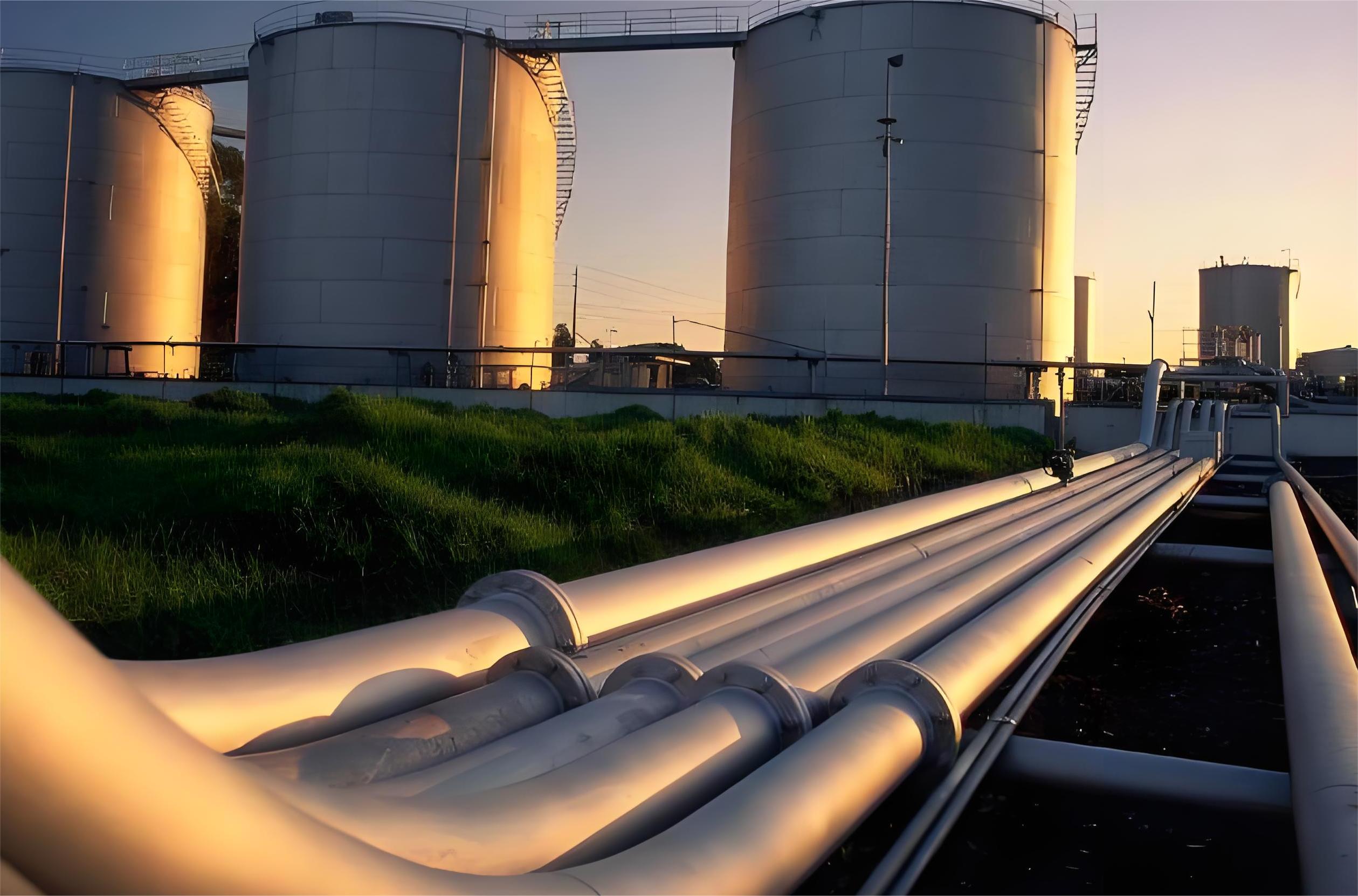
Conveying media
SAWL steel pipes are particularly suitable for the transportation of media such as oil, gas, and water. Because of their superior mechanical properties and high-pressure resistance, these pipes are commonly used in long-distance underground or submarine oil and gas transportation pipelines, as well as urban and industrial water supply and drainage systems.
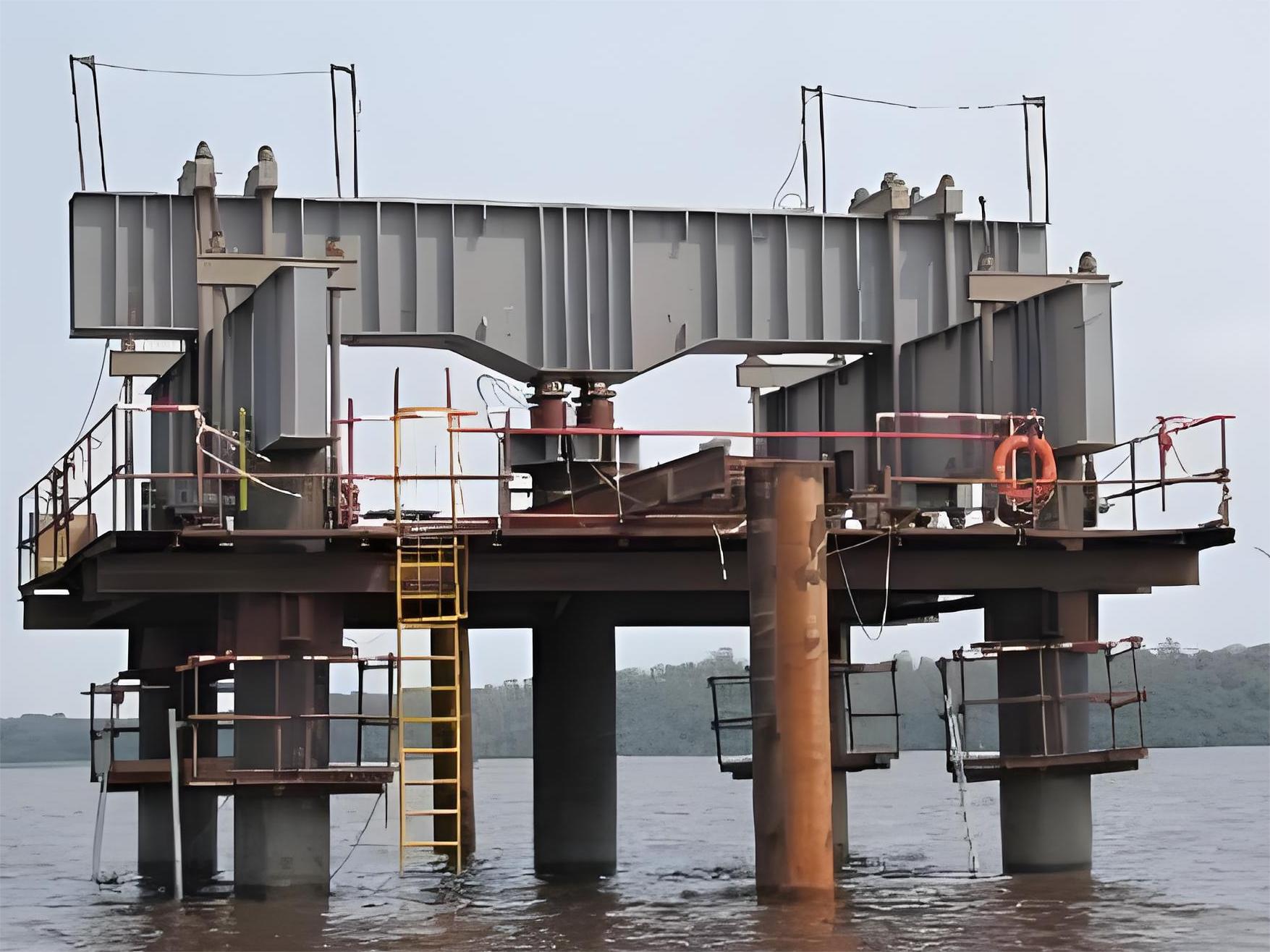
Structural use
SAWL steel pipe provides the necessary strength and stability in the construction of bridges, building support structures, offshore platforms, and other structures that require high strength and durability. These applications utilize the high load-carrying capacity and good welding properties of steel pipe.
Our Related Products
As a welded carbon steel pipe manufacturer and wholesaler in China, we are committed to providing our customers with high-quality products and excellent service. If you are in need of steel pipe or related products, please feel free to contact us. We are looking forward to receiving your inquiry and providing you with satisfactory solutions.
tags:sawl,lsaw,lsaw pipe, suppliers, manufacturers, factories, stockists, companies, wholesale, buy, price, quotation, bulk, for sale, cost.
Post time: Apr-11-2024

